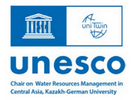



Year: 2024
Collections: Scientific Publications
Topics: Water
Authors: Abdul Wahed Ahmadi, Sükrü Dursun
Countries: Kazakhstan, Kyrgyzstan, Uzbekistan, Tajikistan, Turkmenistan, Afghanistan
Source: https://water-ca.org/
Aquatic plants, including duckweed (Lemna minor), are increasingly utilized in sewage and wastewater treat-ment to improve pollution parameters and organic matter removal.
Year: 2024
Collections: Scientific Publications
Topics: Water
Authors: Esther Mbuci Kinyua, George William Atwoki Nyakairu, Emmanuel Tebandeke, Oghenekaro Nelson Odume
Countries: Kazakhstan, Kyrgyzstan, Uzbekistan, Tajikistan, Turkmenistan, Afghanistan
Source: https://water-ca.org/
Efficient strategies are necessary to effectively remove microplastics (MPs), which are widely present in the environment. Among various techniques, photocatalysis using visible light has emerged as a promising ap-proach to tackle the growing concerns surrounding microplastic waste.
Year: 2024
Collections: Scientific Publications
Topics: Climate
Authors: Susan Legro
Countries: Kazakhstan, Kyrgyzstan, Uzbekistan, Tajikistan, Turkmenistan
Source: Central Asian Journal of Sustainability and Climate Research
Countries in Central Asia, which are highly vulnerable to climate change, experience a variety of health-related impacts to which they must adapt. At the same time, climate mitigation interventions in the health sector in the form of reduced greenhouse gas (GHG) emissions may also generate co-benefits. This article briefly outlines current understanding of the relationship between climate change impacts and human health in Central Asia and establishes a scope of inquiry based on climate and health linkages as identified by the Intergovernmental Panel on Climate Change (IPCC). It then identifies and summarizes existing research and reporting on this topic in the region as presented in published literature, country reporting to the United Nations Framework Convention on Climate Change (UNFCCC), and gray literature, including policy literature and documentation of donor-funded development interventions in the region. This review, which attempts to summarize and appraise those efforts, has found that both peer-reviewed and grey literature on this topic must be used with caution. The most frequent problems with peer-reviewed and grey literature resources involved confounding bias, and—to a lesser extent—self-reporting bias. The use of an appraisal framework for grey literature sources can frame these diverse resources in the proper context, identify potential shortcomings, and gain insights into current priorities and future direction for research on climate change and health in the region.
Year: 2024
Collections: Scientific Publications
Topics: Energy
Authors: Hans Holzhacker, Botagoz Rakisheva
Countries: Kyrgyzstan, Uzbekistan, Tajikistan
Source: Central Asian Journal of Sustainability and Climate Research
In July-August, 2023, CAREC Institute, Public Opinion Research Institute, and Asian Development Bank Institute conducted a sociological survey on household energy use in the Fergana Valley spanning over the Kyrgyz Republic, Tajikistan, and Uzbekistan. The following article uses the data from that survey for investigating what determines the choice of different energy types for heating. The article concludes that high household expenditures for coal and high awareness of the harm fossil fuels can inflict on the environment and family health are insufficient to trigger a large-scale shift towards cleaner energy. To motivate households for such a shift a substantial increase in fossil fuel prices compared to electricity and other clean energy is required. This might call for a sales tax on coal. However, energy expenditure already accounts for up to one-third of household income. Low- and middle-income households would need to be compensated for increased energy spending to avoid social hardship and a backlash against such a tax.
Year: 2024
Collections: Scientific Publications
Topics: Climate
Authors: Nina Miholjcic-Ivkovic
Countries: Kazakhstan, Kyrgyzstan, Uzbekistan, Tajikistan, Turkmenistan
Source: Central Asian Journal of Sustainability and Climate Research
Central Asia is considered a region highly vulnerable to climate change impact and susceptible to climate-induced migration. Rural populations throughout the region are particularly at risk of experiencing adverse effects of climate variability and (im)mobility due to increased exposure to environmental hazards and distress that can severely affect agricultural productivity. This paper explores how climate change impacts migration trends in rural areas of Central Asia with an aim to contribute to the research on climate mobility in the region focusing on most vulnerable inhabitants. By examining the ongoing region's environmental degradation with increased aridity and retreating glaciers that affect local agriculture, water and food security, this paper suggests possible outcomes of such effects on rural mobility trends across five Central Asian countries.
For questions about cooperation, please contact us at: